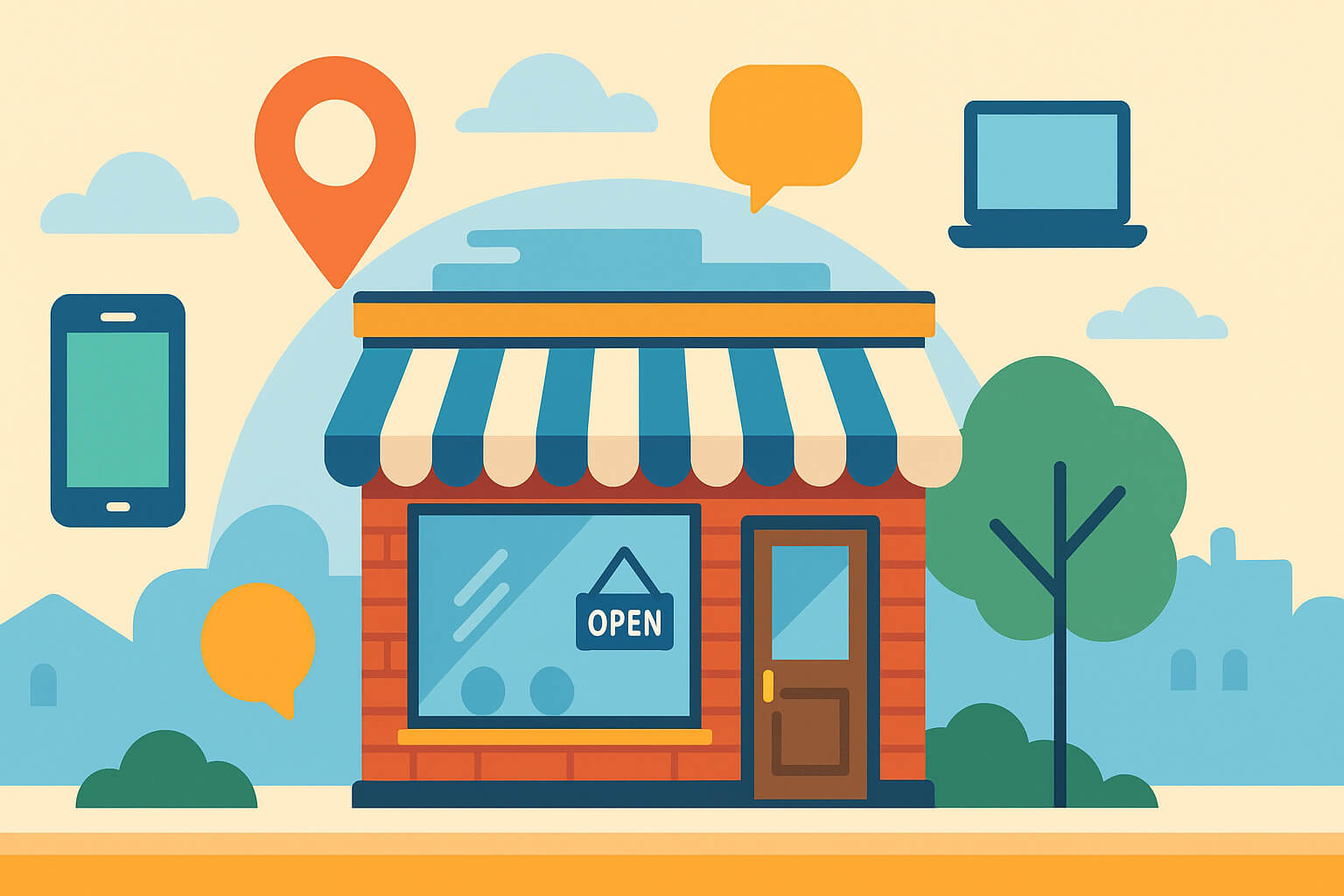What is local marketing? Learn how nearby-focused promotion helps small businesses win traffic and sales with simple steps, stats, and proven tips, right now.
Simply put, local marketing helps your shop talk to neighbors, not strangers, so the right people walk in, buy, and come back. It means showing up wherever nearby buyers hang out: Google, social media, sidewalk, or soccer-field bulletin boards.
Mastering this friendly style of promotion is simpler than it sounds and pays off fast.
What is local marketing in plain words
Local marketing is any message aimed at customers who live or work close enough to visit you today. Online or offline, the radius is small, the intent is big.
“A small business is an amazing way to serve and leave an impact on the world you live in.” – Nicole Snow
That impact starts with reaching neighbors first.
Why local marketing matters
- 8 in 10 Americans search online for a local business every week.
- 76% of “near me” searches lead to a store visit within a day.
- 52% of small firms rely on social media marketing, proving owners already see the local value.
- 93% of shoppers travel 20 minutes or less for everyday buys.
- Word-of-mouth drives up to twice the sales boost of paid ads when tracked correctly.
Ignoring these numbers lets nearby rivals collect your cash instead.
Core building blocks of a local marketing plan
1. Claim and polish your online listings
- Register or update your Google Business Profile. Use real photos, hours, and answers. Keywords like “pizza in Round Rock” help Google map you.
- Add Bing Places, Apple Maps, and Yelp for extra footprints.
- Keep NAP (name, address, phone) identical everywhere to avoid confusion.
“4 in 5 consumers use search engines to find local info.” – Google Research
2. Make your website local-friendly
- Place city, neighborhood, and service keywords in page titles, H1s, and image alt text.
- Embed a clickable map.
- Show reviews and a clear call-to-action button like Book Now.
- Need tech help? See Diffyweb’s guide on small business websites for deeper steps.
3. Social media that sounds like a neighbor
- Post local stories: staff birthdays, community events, weather updates.
- Run polls asking “Which new muffin should we bake this week?”
- Geo-tag every post.
Constant engagement matters because 27% of SMBs never follow up with customers after the first visit, costing repeat sales.
4. Earn and share reviews
Happy voices build trust fast. 83% of Americans buy after a friend’s praise.
- Ask in person at checkout.
- Use email or SMS reminders.
- Respond to every review within 24 hours.
5. Win feet on the street with offline tactics
- Sponsor a youth team jersey. Parents become walking billboards.
- Print door hangers for a two-street radius.
- Host five-minute “how-to” workshops in store.
Offline touch-points spark chatter; studies show word-of-mouth messages hold up to 30% more buying sway than paid media.
Quick-start local marketing checklist
| Task | Tool | Done? |
|---|---|---|
| Claim Google Business Profile | business.google.com | ☐ |
| Add city keywords to homepage title | CMS/WordPress | ☐ |
| Collect three fresh reviews this week | Email, QR code | ☐ |
| Post one geo-tagged Reel | ☐ | |
| Print 100 flyer coupons | Local printer | ☐ |
Complete all within seven days to see measurable lift.
Common mistakes and easy fixes
- Mistake: Same ad copy nationwide.
Fix: Swap “fast oil change” to “fast oil change in Cedar Park”. - Mistake: Forgetting mobile users.
Fix: Compress images; sites that load in under 3 seconds win more clicks. Google notes 88% of smartphone local searches end in a visit within a week. - Mistake: No tracking.
Fix: Use UTM codes on every social link to measure real foot traffic.
Frequently asked question: Is local marketing the same as Local SEO?
Local SEO is a slice of the pie, focused on ranking in search results.
Local marketing covers that slice plus social media, print, events, and partnerships. Think of Local SEO as lights on your storefront and local marketing as the conversations that invite people in.
Measuring success
- Visibility: Track Google Business Profile views.
- Engagement: Count calls, clicks, and DMs.
- Foot traffic: Offer a checkout code like “
LOCAL10” and tally redemptions. - Revenue: Compare weekly sales before and after campaigns.
Remember, small steps compound.
“Success is the sum of small efforts—repeated day in and day out.” – Robert Collier
The takeaway
Local marketing keeps your brand top of mind inside a walking-distance circle. By pairing smart online signals with genuine community touch, you build loyal fans, steady cash flow, and a bigger role in the place you call home. Start today. Your neighbors are already searching.
